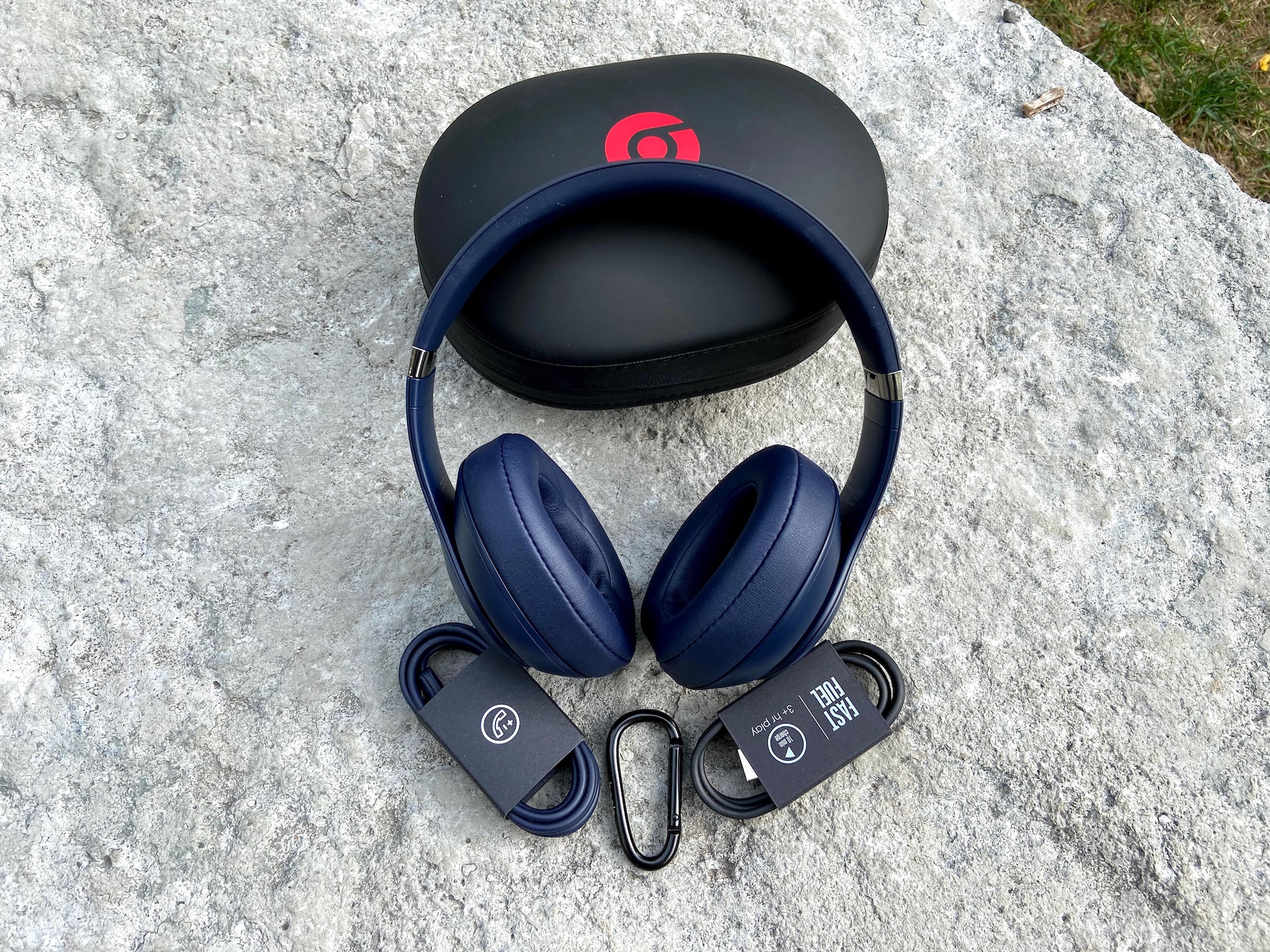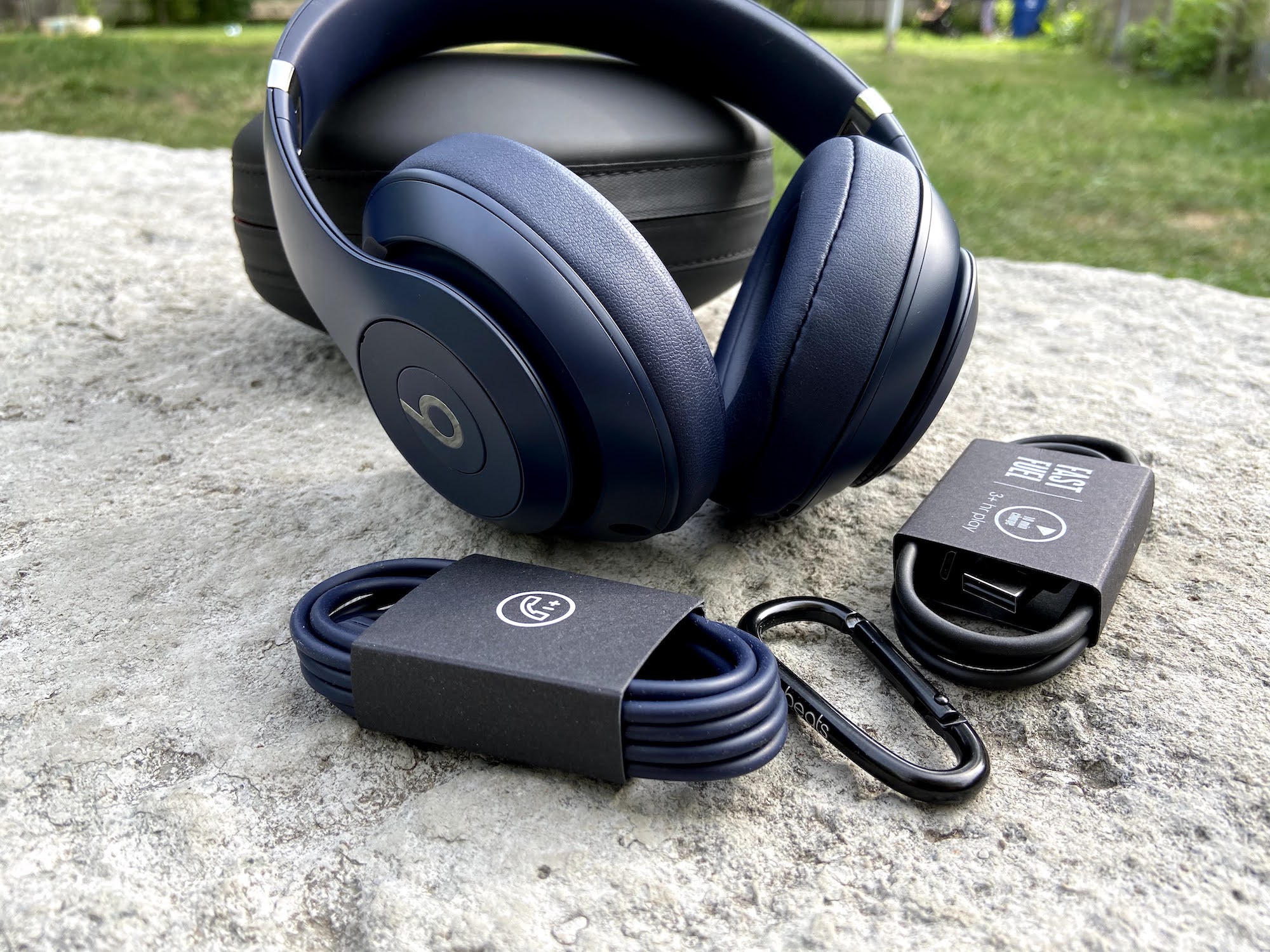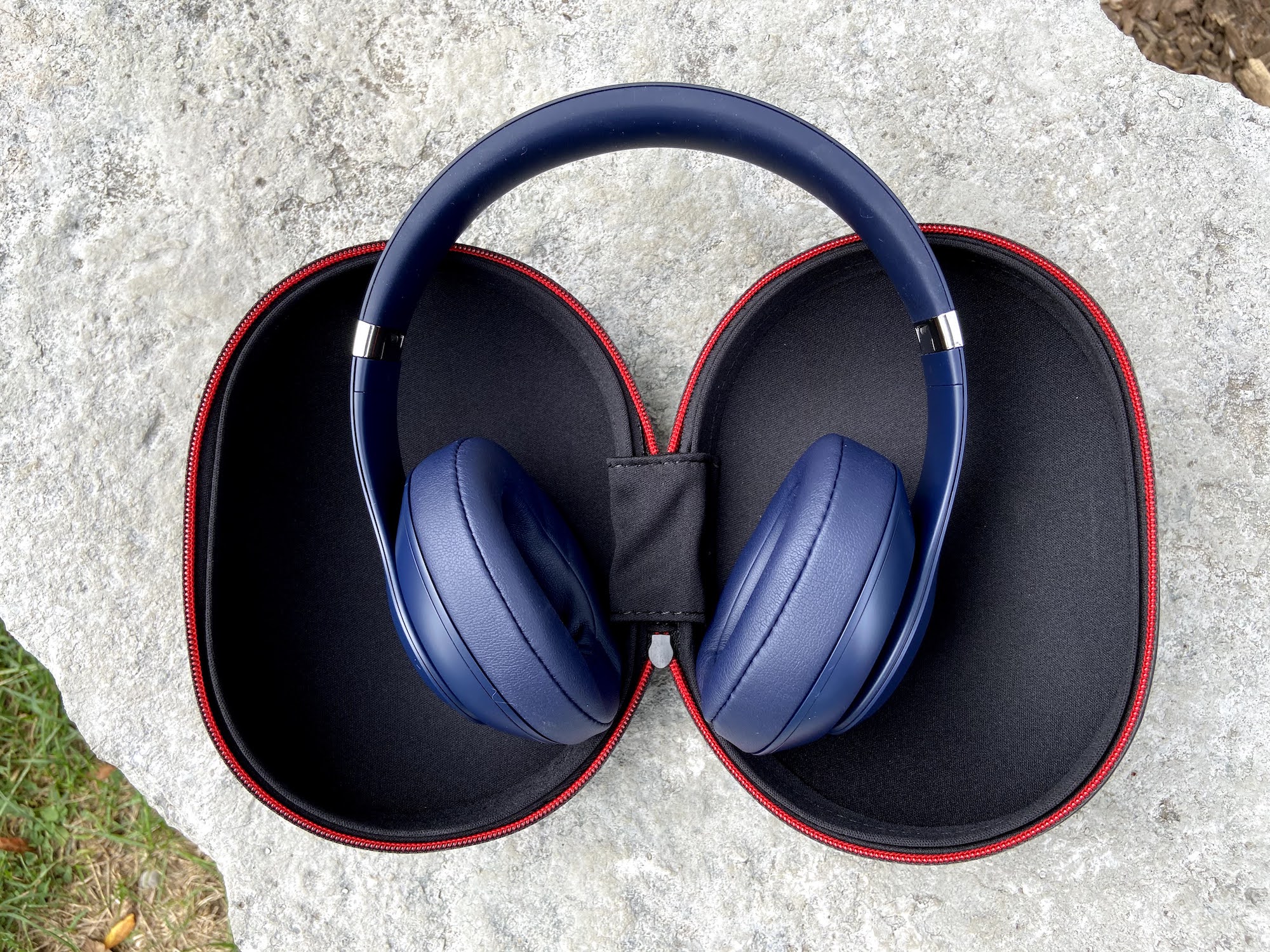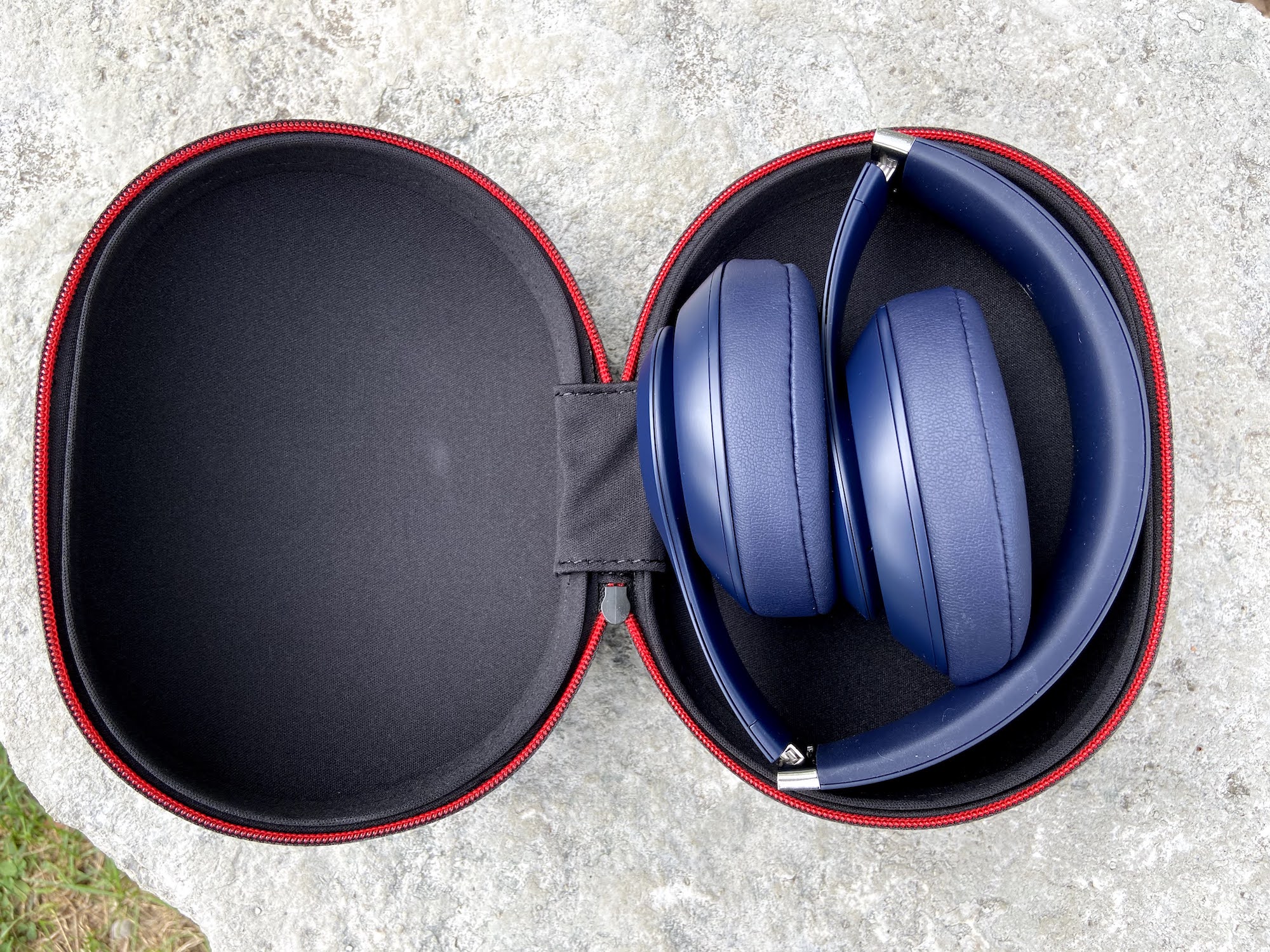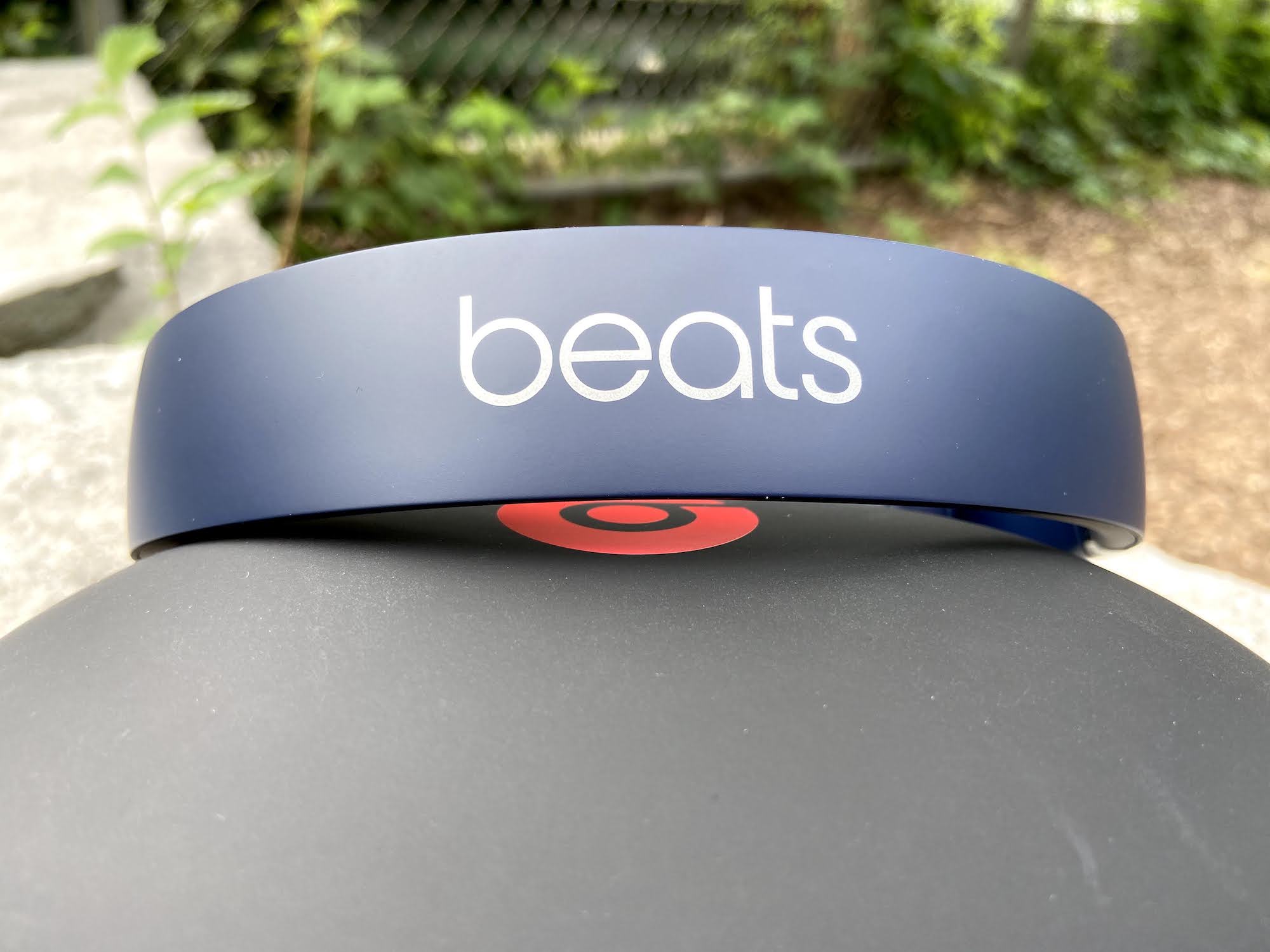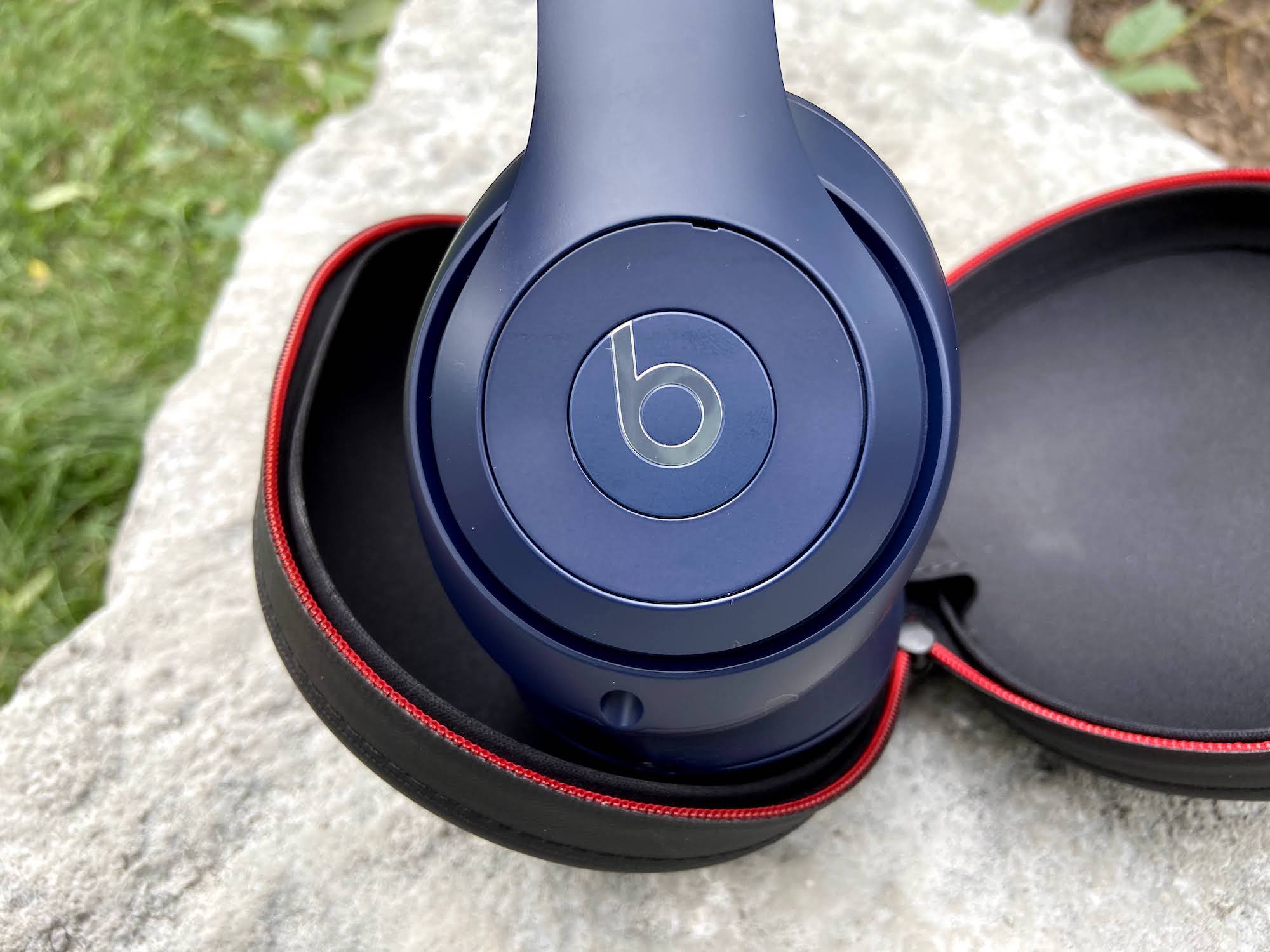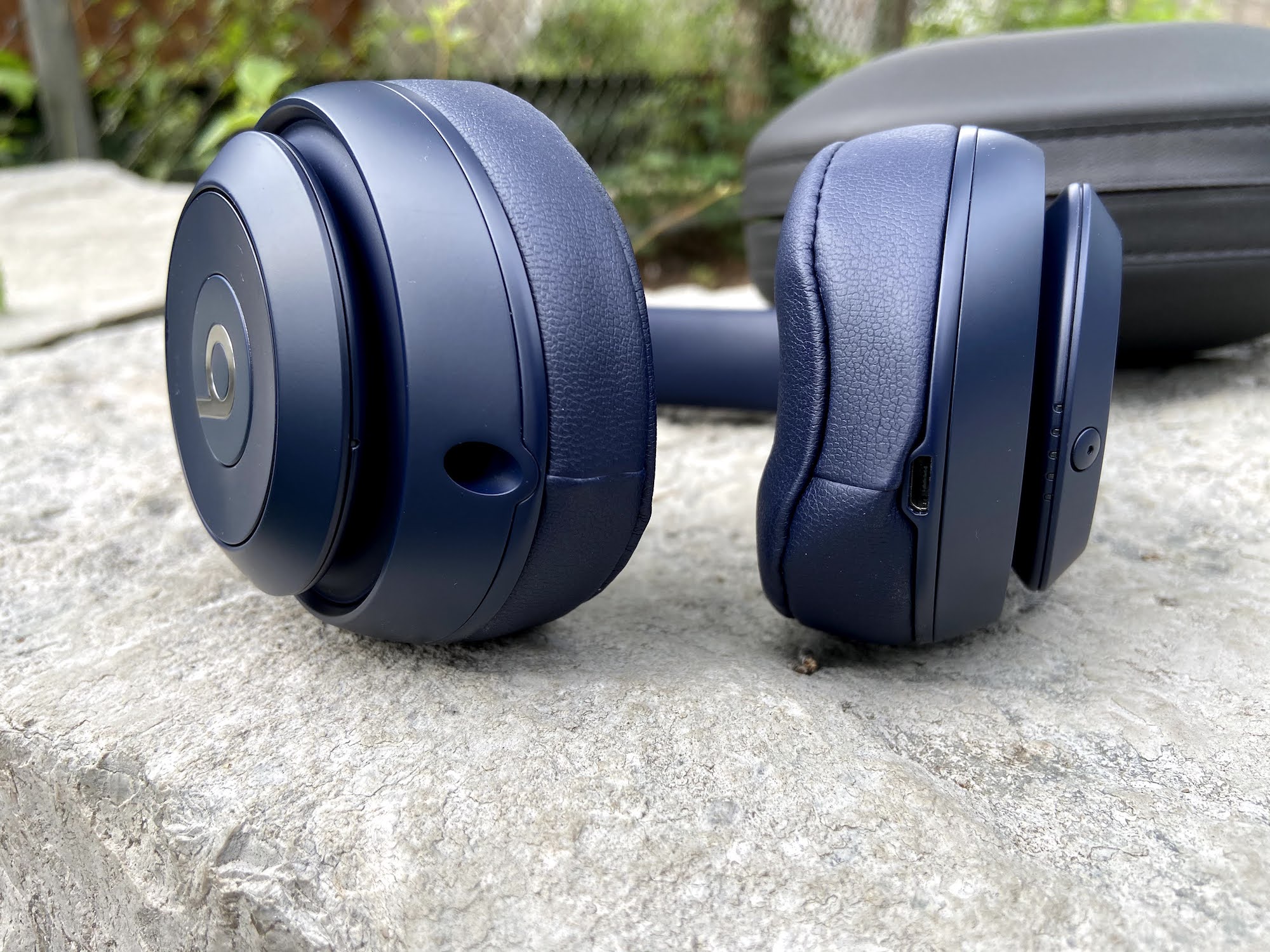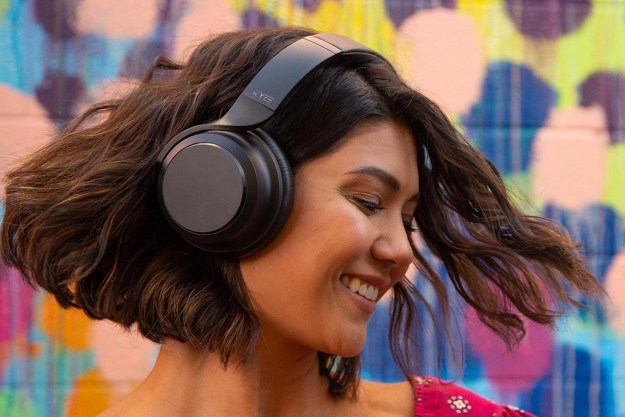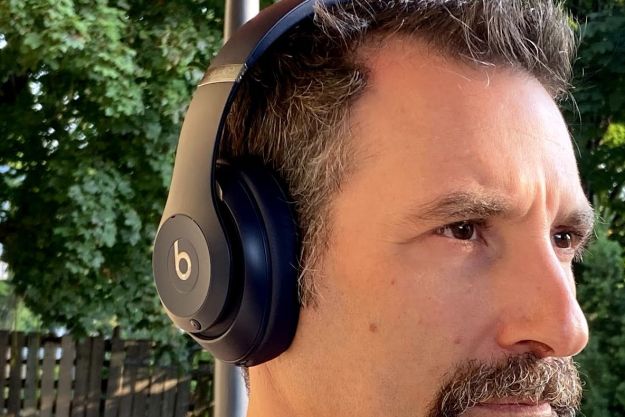
“A stellar design suffers from mediocre ANC and a lack of low-end oomph.”
- Excellent design and controls
- Very comfortable
- Great non-ANC battery life
- Easy pairing with Apple products
- Expensive
- Underwhelming bass
- Poor wireless call quality
When the $350 Beats Studio 3 Wireless debuted in 2017, we didn’t get a chance to review them. If we had, we might have come to the same conclusion as other reviewers: That these are a really decent set of active noise canceling (ANC) headphones.
But in the personal audio world — especially the wireless headphone world — three years is an eternity. In that time, Sony, Bose, and pretty much every other major brand has launched new top-tier wireless ANC headphones — in Sony’s case, two new top-tier models — while Beats has been content to let it all ride on the Beats Studio 3 Wireless.
Given what the competition has been up to, can Beats still justify the Studio 3’s high price? Or have these Beats been beaten?
Let’s take a look.
What’s in the box?
The Beats Studio 3 Wireless are a big set of headphones and they arrive in a big box. Fortunately, it’s 100% cardboard and you won’t find any hard-to-recycle materials like foam or plastic inside.
In addition to the Studio 3 headphones, you get a zippered hard-shell carry case, a Micro USB charging cable, and a 3.5mm analog audio cable with an inline set of remote buttons and a mic.
Beats also throws in a small carabiner clip in case you want to attach the carry case to a backpack or purse.
Design
I’ll be honest: I was never a big fan of Beats’ earliest designs, with their glossy white, red, or black headbands. It always seemed to me that they were meant to call attention to those who wore them — not something I tend to seek.
But the Studio 3 are available in several color choices including my review unit’s blue — a hue just slightly lighter than navy, with a satin finish. It’s tasteful and subdued, with small chrome accents on the hinges and earcups just to remind you that these are not an $80 set of headphones.
But the best part of the Studio 3 Wireless is their fully integrated headband and earcup pivots. It’s a design that is unique to Beats and it gives these headphones a sleek and minimalist look. It also creates a very slender profile, keeping the “Princess Leia effect” to a minimum.
This theme of visual simplicity carries through to the controls, which are effectively invisible. The left earcup houses play/pause, call answer/end, track skip forward/back, and voice assistant access from the central “b” logo, while volume is controlled by the plastic ring that circles the logo.
The only other control is the tiny power button on the right earcup which does triple duty as power, Bluetooth pairing, and ANC on/off. Right below that button is a five-LED strip of lights that serves as a quick reference for remaining battery life.
Like many full-size headphones, the Studio 3 fold up for storage, but the earcups do not pivot to lie flat. This makes them a tad bulky and explains why the carabiner clip is included — the hard travel case is bulbous-shaped and not easy to stick in a backpack unless you’ve got lots of extra room. Despite the fact that the earcups don’t lie flat, the Studio 3 are more comfortable when worn around the neck than many over-ear models I’ve tried — once again, their minimalist design is an asset.
The Studio 3 nail the balancing act, with a fit that is both very secure and very comfy.
My only small gripe when it comes to the design of these cans is the headband’s padded underside. It’s covered in a grippy silicone rubber surface that keeps the Studio 3 from moving around, but that material is a dust and debris magnet that requires regular wiping with a damp cloth to keep it clean.
Comfort, controls, and connections
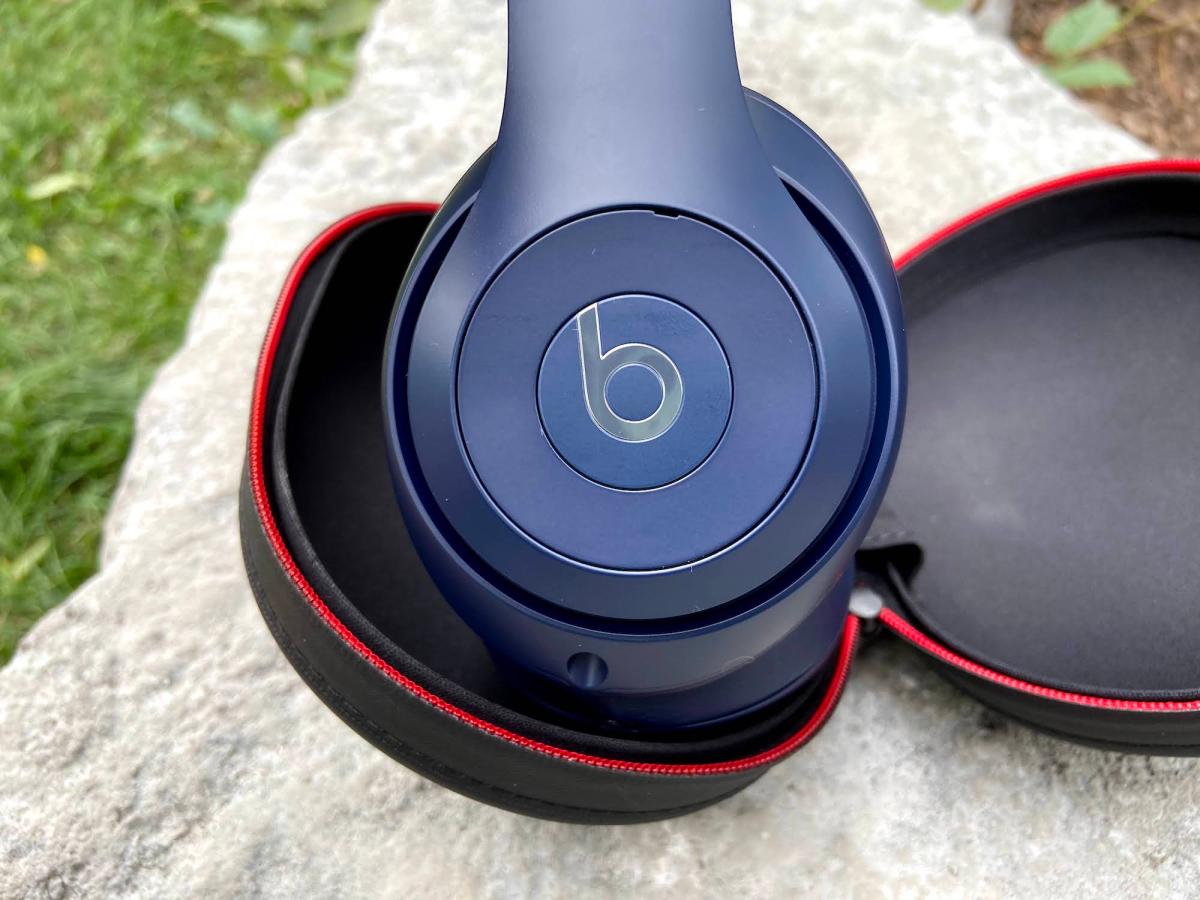
The Studio 3 Wireless aren’t the lightest full-size headphones you can buy — that honor probably falls to Sony’s WH-1000XM4 — but they are certainly among the most comfortable.
The trick to headphone comfort is managing the delicate balancing act between headband padding, clamping force, ear cushion (size, shape, and padding), and the materials used.
The Studio 3 nail this balancing act, with a fit that is both very secure and very comfortable. You may have seen folks working out or even jogging with these cans on, and while that isn’t a choice I’d make, the Studio 3 make it possible — something I can’t say about the majority of full-size headphones I’ve reviewed.
You may notice some weird dents in the ear cushions in the accompanying photos — ignore them. The headphones had been left in their case for a long time before I removed them and about an hour after I shot these photos, they had bounced back.
The controls are also very well-executed. I’m a fan of physical buttons; in my experience, they just work. Touch controls — even the best ones — can lack responsiveness. The Studio 3’s buttons are not only big and easy to find and use (amazing given they’re seamlessly embedded in the earcup pivot), but they’re also precise. There’s no guesswork — press, click, done.
Yes, there’s quite the audible clicking sound when you use them, but I’ll take a momentary click noise if it means I don’t have to repeatedly tap a touch control.
There are only two things missing: A wear sensor that automatically pauses your tunes when you remove the headphones would be awesome (Apple’s AirPods, AirPods Pro, and the WH-1000XM4 already have this) as would a hear-through (passthrough) mode that lets you pipe outside sounds in for a while.
Wireless range on the Studio 3 is superb — much better than the majority of wireless headphones.
As with all Apple-made headphones that use the W1 or H1 wireless chips, Bluetooth is a joy on the Beats Studio 3 Wireless. To pair them, you simply power them on a few inches away from an unlocked iOS device running iOS 10 or newer and you’ll be instantly notified that your Studio 3 are ready to go — just tap once and you’re done.
There’s no Bluetooth Multipoint (which lets you keep them connected to two devices at once), but Apple’s take on this feature is almost as good, letting you switch between Macs, iPhones, and iPads with just a click.
The Studio 3 are also compatible with Apple’s audio sharing feature, which lets any two W1- or H1-equipped headphones or earbuds listen simultaneously to content from an iOS device. This feature will be coming to more devices with Bluetooth Audio LE, but for now, it’s an Apple-exclusive.
Sadly, audio sharing, easy pairing, and device switching are not supported on Android devices.
As a Class 1 Bluetooth device, wireless range on the Studio 3 is superb — more than 300 feet when outdoors — much better than the majority of wireless headphones. I was able to leave my iPhone in the house and still had a reliable signal when I was standing across the street in front of a house two doors down.
Battery life
Battery life for the Studio 3 Wireless is either so-so or excellent, depending on how you plan to use them.
With ANC on, you’ll get about 22 hours worth of playtime, which is just a tad better than the $400 Bose Noise Cancelling Headphones 700 at 20 hours, but not as impressive as Sony’s $350 WH-1000XM4, at 30 hours.
However, if you don’t use the ANC function (which appears to devour battery life), you’ll get an excellent 40 hours, which is two hours more than the Sonys.
The quick-charge feature is about average, with 10 minutes of plug time netting you 3 extra hours of playtime.
Speaking of the plug, the Studio 3 use the Micro USB format, not the newer and more common USB-C connection. That’s hardly a deal-breaker, but for most folks, this means one more cable to remember when you hit the road.
Noise cancellation
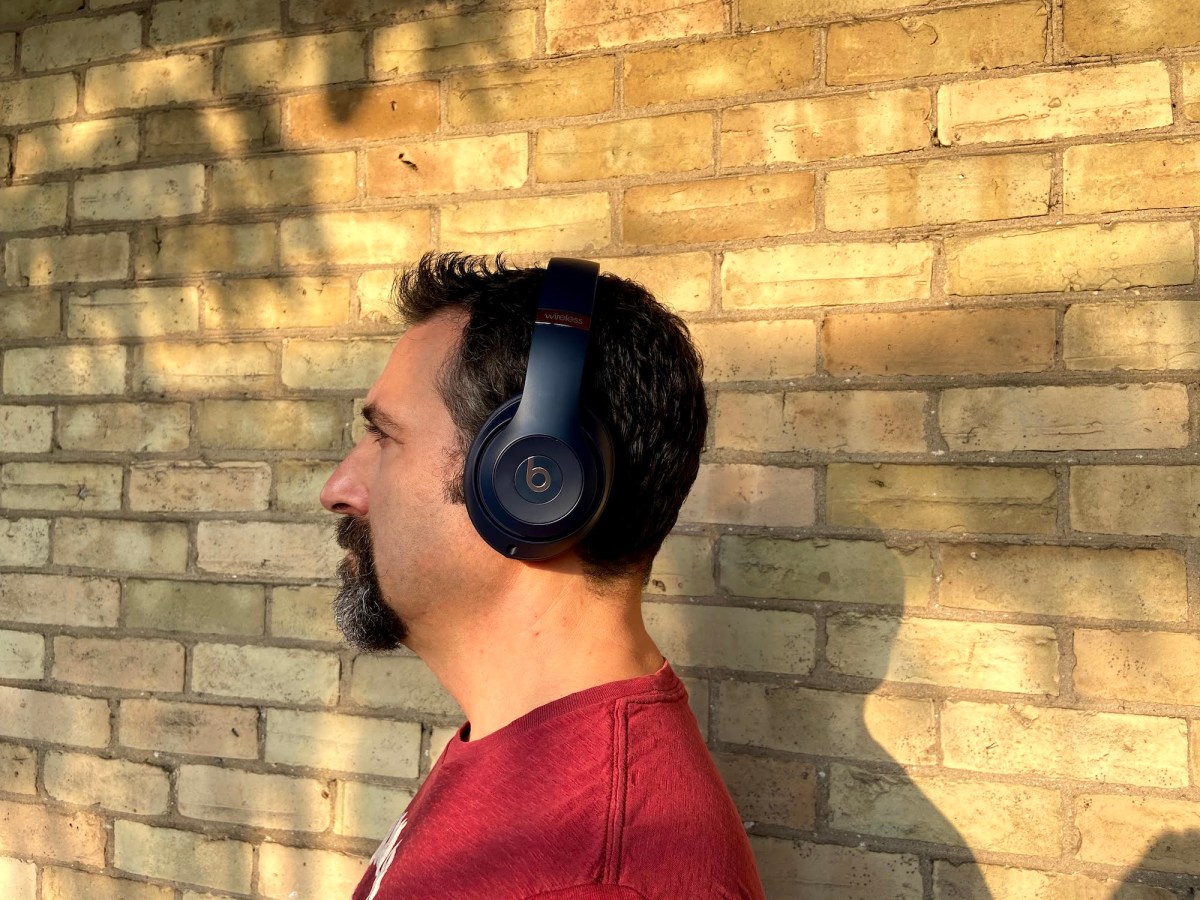
The Studio 3 Wireless have what Beats calls “true” ANC, which the company claims “continuously pinpoints, isolates, and cancels exterior noise in real time to play sound the way it was intended.” That sounds great, but in reality, I’d say the ANC is about average, and certainly not as good as what you’ll find with either the Bose Noise Cancelling Headphones 700 or the Sony WH-1000XM4.
With no music playing, the ANC produces a noticeable hiss, preventing an enjoyable way to just grab some peace and quiet.
Background sounds are definitely reduced with ANC on, and Beats is right about one thing — there’s no discernible change in audio quality between on and off modes.
However, with no music playing, the ANC produces a noticeable hiss, which prevents these cans from being an enjoyable way to just grab some peace and quiet. Why trade the sound of an airplane’s engines for a low-key hiss?
I also noticed the ANC mode struggled to compensate for windy conditions, sometimes inadvertently amplifying the wind sound instead of canceling it.
The good news: The Studio 3 Wireless do an excellent job of passive noise isolation, making ANC a nice but not critical feature.
The bad news? That passive noise isolation is so good, it makes me wish even more for a passthrough mode — especially during phone calls.
Sound quality
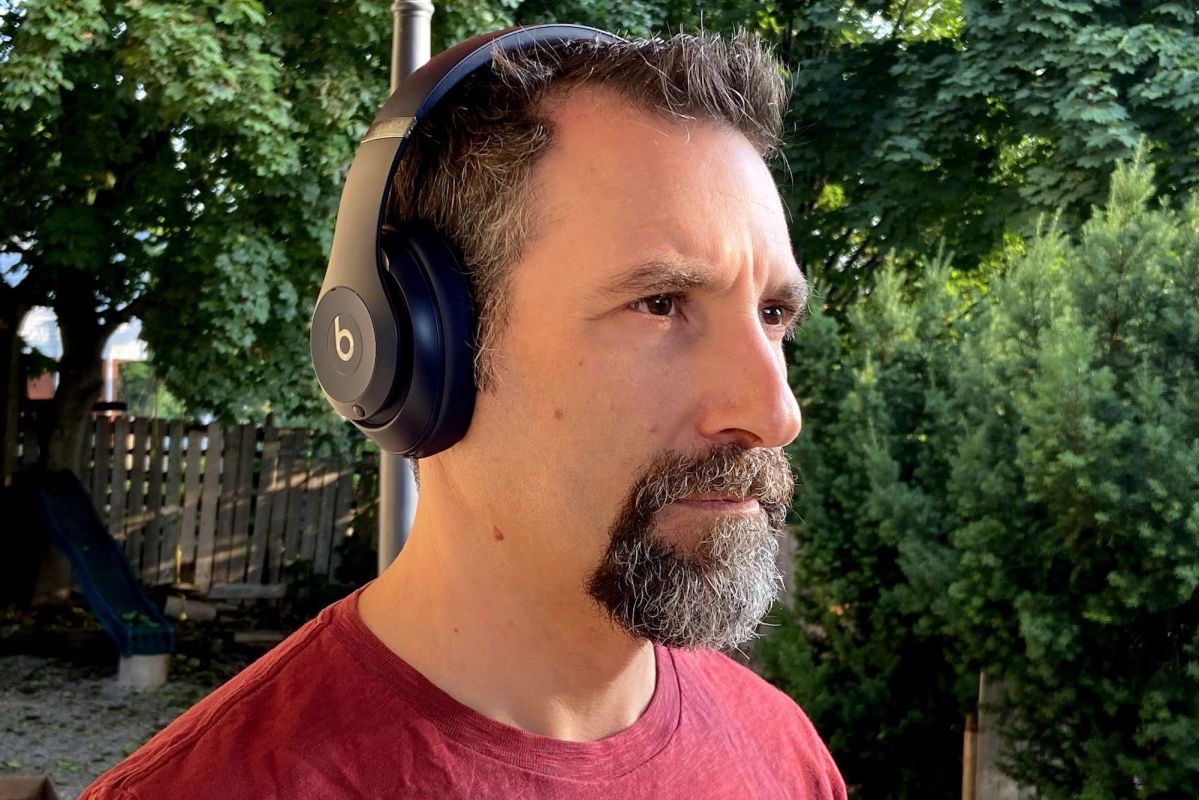
I’d always thought of Beats as a bass-forward company, something that has definitely been true of its other products like the Powerbeats Pro.
So it came as a total surprise that the Studio 3 Wireless don’t fit that mold at all.
This is the same complaint we had with the Solo3. It’s not just that the bass isn’t the key ingredient in their sound signature, I’d go so far as to say it has been forced to take a back seat to the midrange and highs.
On the one hand, there is bound to be a group of folks who like the idea of a less boomy set of Beats — perhaps fans of the famous “neutral” or flat EQ that audiophiles praise.
But I don’t count myself among them. I like copious amounts of all frequencies so that when I listen to a deep, sorrowful track like Hans Zimmer’s Time, I get that hair-raising, feel-it-in-your-guts low-end bass. On the Studio 3, that kind of bass is simply absent, and with no ability to alter EQ, you can’t compensate by adjusting other frequencies.
Before you take this as a sign that you should put the Studio 3 in your “other” consideration column, it’s worth noting that while these cans will disappoint bass heads, they still produce excellent, detailed sound in the mids and highs.
For vocal-heavy music, especially the kind created by the biggest divas of our time, like Beyonce, Lady Gaga, or Adele, the Studio 3 deliver energy and clarity.
And if you like it loud, these cans are happy to oblige, without a hint of distortion all the way up to pain-inducing thresholds of volume.
So despite Beats’ roots as a brand embraced by (and promoted by) legendary hip-hop and rap artists, these particular Beats headphones are better-suited to genres that rely a little less on lowdown thump.
Call quality

I recently reviewed the BeatsX, a set of wire-connected Bluetooth earbuds, and praised them for their call quality. My belief is that their inline mic — placed close to the mouth — is the secret to that success.
I’m now even more convinced after doing a few calls on the Studio 3 Wireless, which can’t hold a candle to the BeatsX.
The Studio 3 appear to have no trouble with amplification, as voices were perfectly audible as far as loudness goes, but clarity is another matter.
Most of the time, it sounded like I was listening to my caller through a few layers of fabric. I could sense what they were saying, but it took a lot of effort.
Granted, my chosen location was something of a torture test — a very busy street with a lot of truck traffic — but even during the lulls in vehicular activity, it was never a great experience.
The silver lining, I suppose, is that thanks to the included analog cable with inline mic, if getting better call quality matters, it should be as simple as plugging that cable in and hitting dial.
Our take
With excellent design, great controls, and terrific non-ANC battery life, the Studio 3 Wireless are still a great choice for those who don’t place a high priority on big bass, whisper-quiet ANC, or wireless calling. But for $350, you really need to value what they have to choose them over the competition.
Is there a better alternative?
Yes indeed. I’ve mentioned the $400 Bose Noise Cancelling Headphones 700 and the $350 Sony WH-1000XM4 throughout this review, and I think they both provide arguments to leave Beats-town. Pick the Sonys if you care about customization, comfort, and sound quality; pick the Bose if ANC and call quality are on the top of your list.
How long will they last?
The Beats Studio 3 Wireless come with a one-year warranty from Apple, which can be extended with an optional AppleCare purchase. Under normal use, I think they will last for many years, though you can expect battery capacity to diminish over time. Overall, they are very well built, with top-notch materials and durable metal parts for high-use areas like the hinges and sliders.
Should you buy them?
Yes, but I think you should wait until you find them on sale for $250 or less. If you’re among the Apple faithful, some of the Apple-only wireless features might be worth the Studio 3’s high price. But make sure you understand and are OK with the areas of weakness — specifically call quality and a lack of low-end bass — before you lay down your cash.
Editors' Recommendations
- Best wireless earbuds for 2024: Sony, Bose, Soundcore, and more
- JBL upgrades its 2024 wireless headphones with massive battery life
- Beats drops three new colors for the Fit Pro, including a eyeball-searing yellow
- Soundcore Liberty 3 Pro earbuds go after Sony’s wireless hi-res crown
- Razer’s $99 Opus X wireless headset aims to cover all of your audio needs

